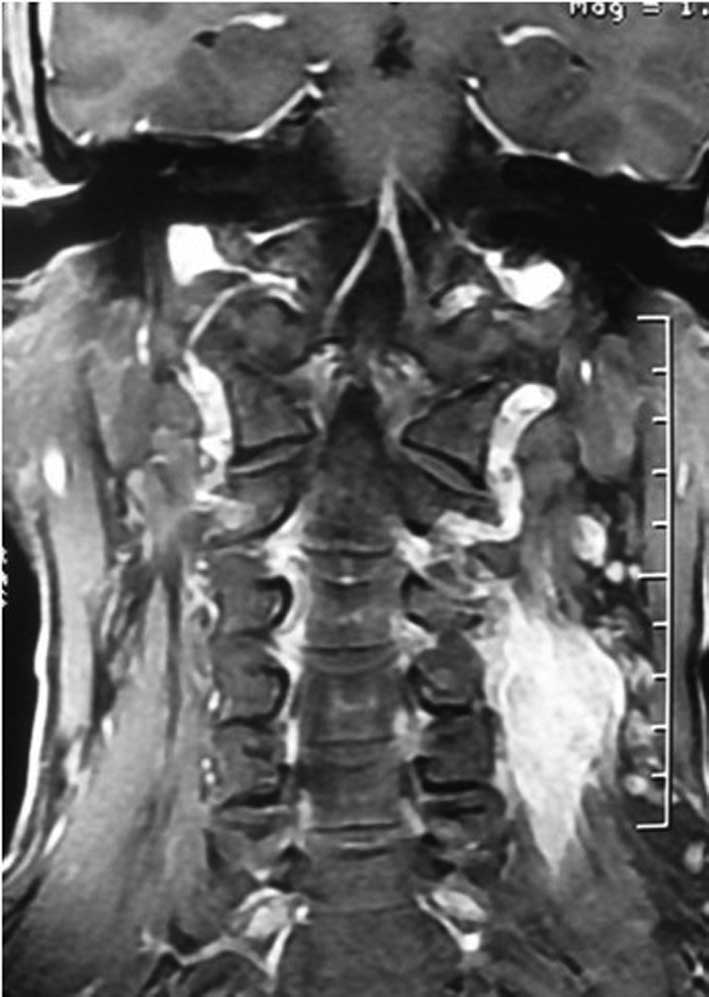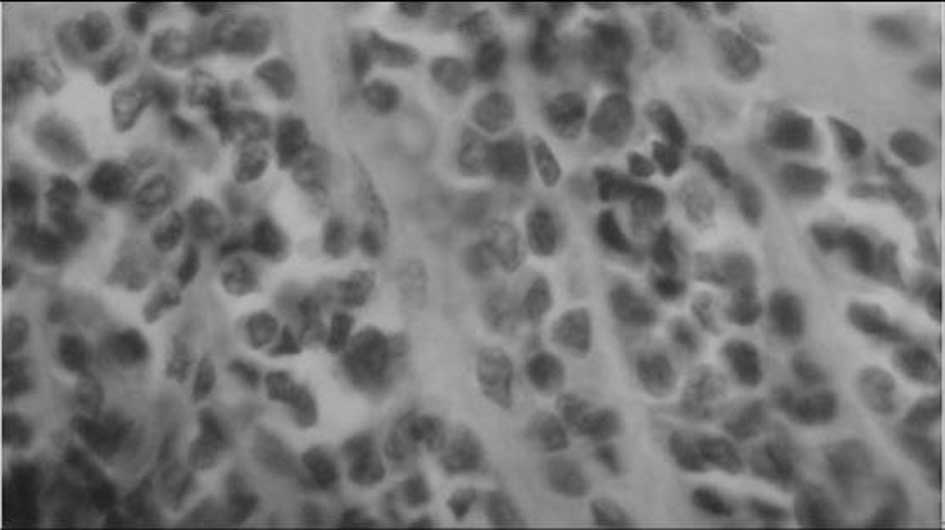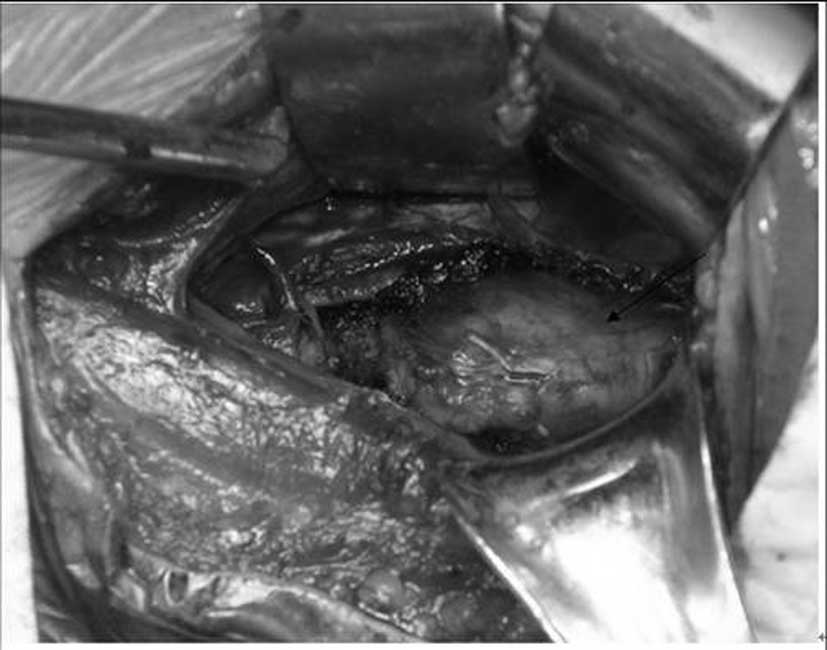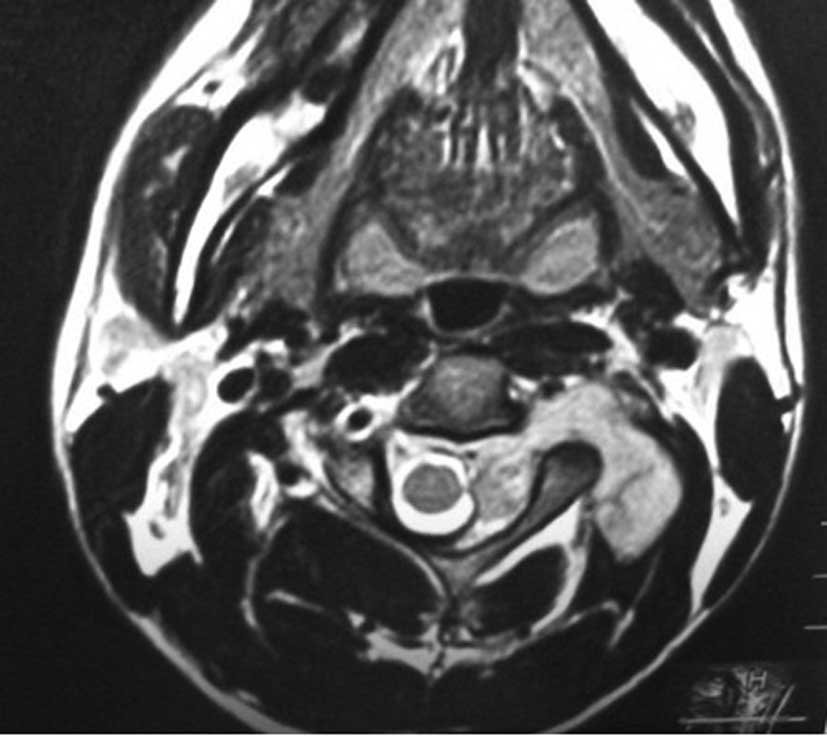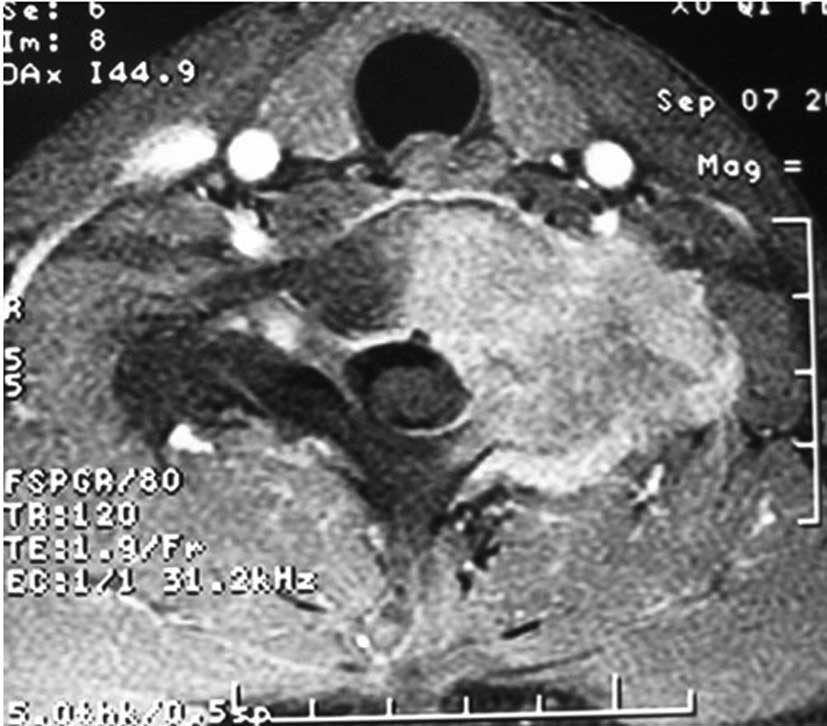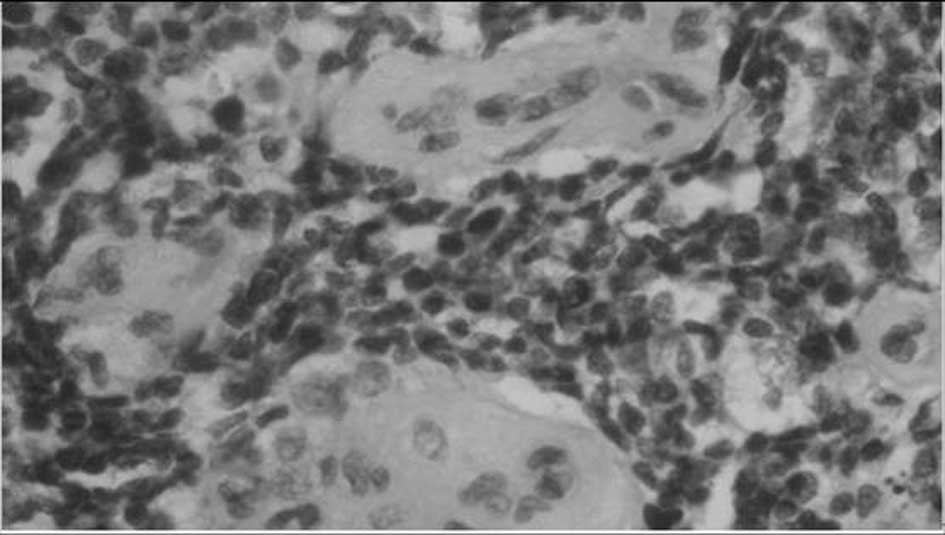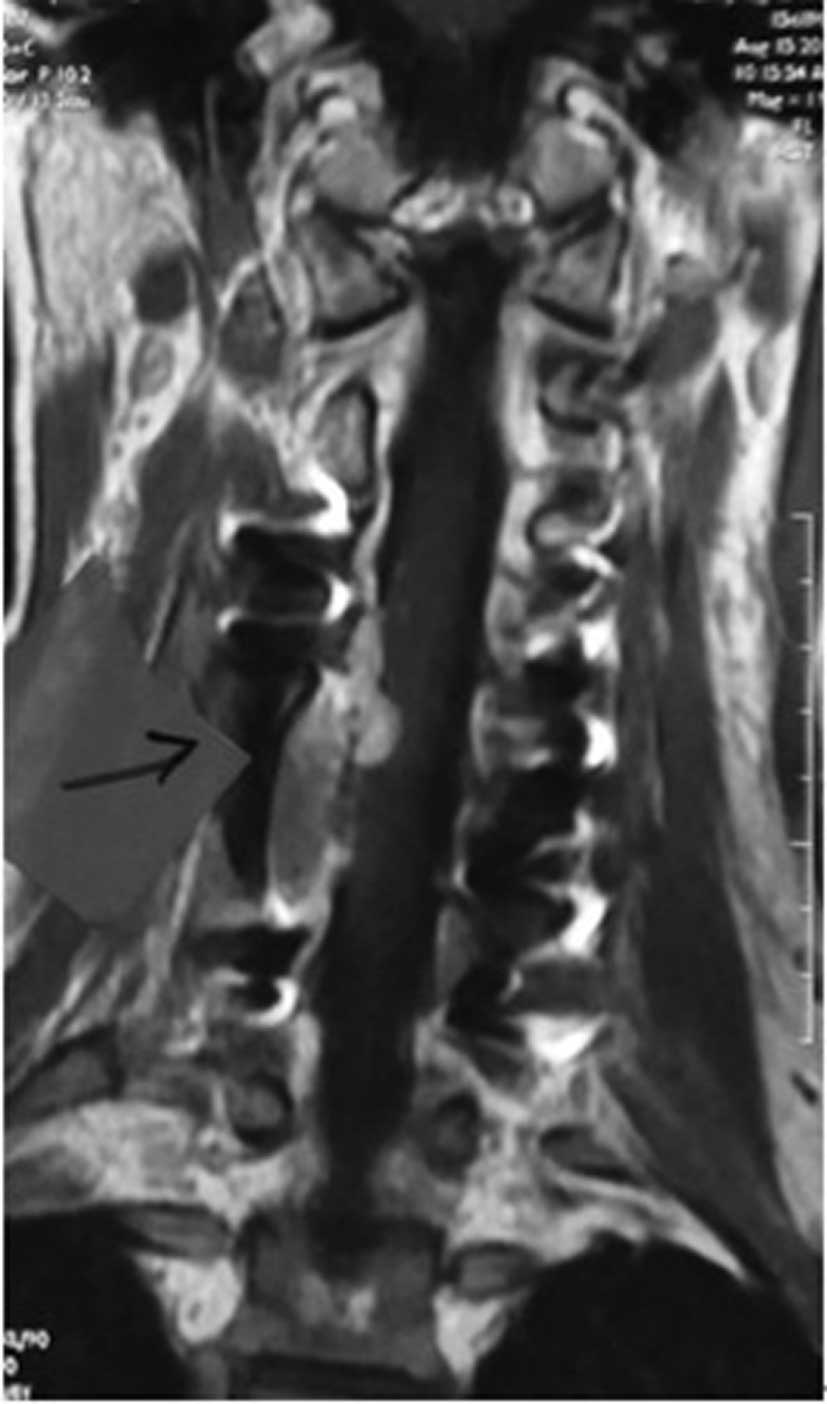Primary dumbbell-shaped Ewing's sarcoma of the cervical vertebra in adults: Four case reports and literature review
- Authors:
- Published online on: January 3, 2012 https://doi.org/10.3892/ol.2012.550
- Pages: 721-725
Metrics: Total
Views: 0 (Spandidos Publications: | PMC Statistics: )
Total PDF Downloads: 0 (Spandidos Publications: | PMC Statistics: )
Abstract
Ewing's sarcoma is the second most common malignant bone tumor in children and adolescents. The 4 cases described in this study were diagnosed with dumbbell-shaped intraspinal and extraspinal Ewing's sarcomas. The incidence of dumbbell-shaped tumors of this type in the spine is 17.5%. These tumors are often misdiagnosed as neurogenic tumors (schwannoma, neurofibromatosis) or giant cell tumors based on imaging. Radiculopathy is more common than spinal cord compression in Ewing's sarcoma. Preoperative biopsy is strongly recommended. As soon as Ewing's sarcoma is diagnosed by pathology, the treatment should begin with 2-3 cycles of neoadjuvant chemotherapy. Anterior-posterior and posterolateral approaches are both recommended for exposing this tumor. Following surgery, chemotherapy is critical to lessen the rate of recurrence and metastasis and to prolong the survival time. However, radiotherapy should be used with caution, as the spinal cord is sensitive to radiation; local irradiation is suggested. The tumor is difficult to remove en bloc in the cervical spine. It has a high rate of recurrence and metastasis. Therefore, the prognosis of Ewing's sarcoma in the cervical region is poorer compared to that in the thoracic and lumbosacral regions.



